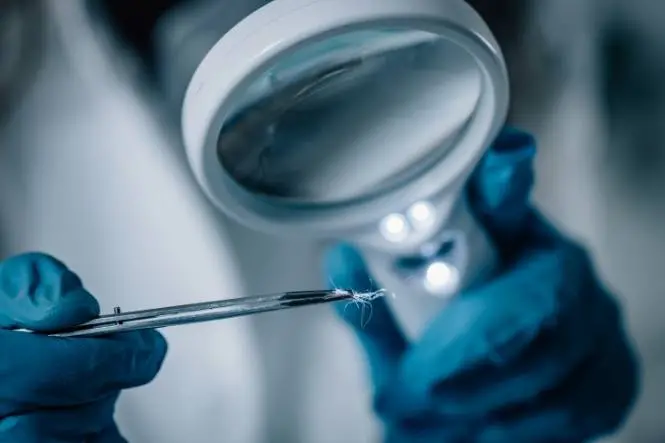We have all doubtlessly watched television shows and/or movies where the mention of hair and fibre is made often when it comes to the discovery of a corpse or indeed the reporting of a crime.
The Importance of Hair and Fibre
Hair and fibre are two of the most important resources in Forensic Science and are often responsible for providing valuable clues as to the identity of an assailant or attacker.
The discovery of hair on the body of a victim or on the clothes of someone who has been the victim of an assault can often be used to determine race and sex. It can also be used to extrapolate DNA for comparison.
Although hair is classified as benign dead matter it still contains DNA even though the hair itself is not actually a living organism but is merely pushed through the follicles of the scalp, arms, legs or any other part of the anatomy where hair is found.
Fibres too are an important discovery and can go some way to determining what an attacker or killer was wearing at the time of the incident. Many forensic scientists use fibres as a means of determining the nature of the item worn and in some instances can be as precise as to identify the make of the garment and thus the manufacturer. In some instances this technique is so successful that garments that are rare or indeed specially made can be identified and thus a list of possible suspects drawn up simply by the number of units sold.
Collecting Evidence
Hair and fibre are collected at varying points throughout the forensic science process but most notably at the scene of the crime and at the autopsy stage.
At the scene of crime hair and fibre samples are collected from the surrounding area and this can be for the purposes of eliminating individuals from police enquiries as well as to help narrow down the list of suspects. These samples are collected through meticulous and painstaking processes, which are carried out by Scenes of Crime Officers (SOCO) who themselves are dressed in protective clothing so that their own clothing and hair do not contaminate any evidence which may pre-exist.
These samples are collected in varying vials, tubes and grip seal bags so that cross contamination may not occur between the time of collection and the time of proper analysis.
The victim’s clothing may be examined for trace elements of bodily fluid such as blood, semen or saliva and whilst this is being done the clothes are also checked for hairs that do not match those of the victim and likewise fibres that are not correspondent to the items of clothing they are wearing. It is also possible at this point to collect animal hair and soil samples.
The second stage of collecting hair and fibres is at the autopsy when the pathologist will scrape the underside of the victim’s fingernails for any hair, skin, fibres or material that might have gathered there. This is a useful technique as often during a violent struggle the victim with attempt to defend him or herself by lashing out in a defensive posture, possibly scratching or biting their attacker in the process.
These materials are then collected and stored in the same manner so that further examination and comparison may take place at a later stage. Take a look at what’s involved in the Pathologist’s role in relation to forensics.


